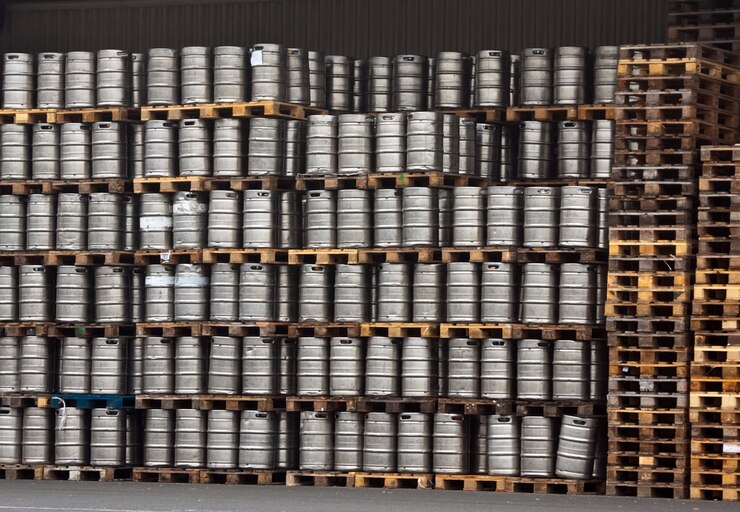Multi-Tier Shelving System

A Multi-Tier Shelving System is a storage solution that consists of multiple levels or tiers of shelves stacked vertically. This type of shelving system is ideal for environments where maximizing vertical space is crucial and allows for the storage of a larger volume of items in a smaller footprint. Multi-tier shelving systems are commonly used in warehouses, retail stores, libraries, and offices where there is a need for high-density storage of products, documents, or materials.
Key Features:
- Multiple Levels: The defining feature of a multi-tier shelving system is its several levels of shelves, which help utilize vertical space efficiently. Each level can be adjusted to accommodate different types and sizes of goods.
- Increased Storage Capacity: By stacking shelves vertically, multi-tier systems maximize storage capacity, making them ideal for spaces with limited floor area but high storage needs.
- Versatility: Multi-tier shelving systems can be used for a wide range of applications, from storing documents and office supplies to housing heavy-duty items in industrial environments.
- Customizable Configurations: The shelves in a multi-tier system are often adjustable, meaning that the height of each tier can be modified to fit different items. This flexibility allows the system to be tailored to specific storage requirements.
- Easy Accessibility: Each tier of shelves is typically designed to be easily accessible. However, depending on the height of the tiers, some systems may require the use of ladders or lift equipment to reach the top shelves.
- Strength and Durability: Multi-tier shelving systems are typically constructed from strong materials, such as steel or heavy-duty metal, which ensures they can hold large quantities of items safely.
Ideal Use Cases:
- Warehouses: Multi-tier shelving is widely used in warehouses to store a variety of goods, including boxes, pallets, and tools, allowing for easy retrieval of items while maximizing available space.
- Retail Stores: In retail environments, multi-tier shelving systems can be used for displaying merchandise. They help store more products while maintaining a neat and organized layout, especially for smaller or medium-sized products.
- Libraries and Archives: Multi-tier shelving systems are perfect for libraries and archives that need to store books, files, and documents in an organized manner while utilizing vertical space effectively.
- Manufacturing and Distribution: In manufacturing or distribution centers, multi-tier systems are used to store parts, tools, and components in an organized manner, improving workflow and accessibility.
- Office Spaces: Multi-tier shelving is often used in offices to store files, documents, and office supplies, allowing employees to quickly access what they need while keeping the space organized.
Benefits:
- Maximized Storage Capacity: Multi-tier shelving allows for the storage of more items in the same amount of floor space, making it ideal for high-density storage in smaller areas.
- Optimized Vertical Space: By utilizing the height of the room, multi-tier shelving systems make the most out of available space, reducing clutter and improving the organization.
- Flexibility in Storage: Adjustable shelves in multi-tier systems provide the flexibility to store different sizes and types of items, from small office supplies to larger industrial products.
- Improved Organization: Multi-tier shelving systems help to keep items organized and easily accessible. This makes it easier to retrieve goods and reduces time spent searching for specific items.
- Cost-Effective: Multi-tier shelving systems are cost-effective solutions for increasing storage capacity in areas where expanding floor space may be impractical or expensive.
Limitations:
- Access Issues for Higher Tiers: Depending on the height of the shelving system, it may be necessary to use ladders or lifts to access the top shelves. This can make it less ideal for environments where frequent access to high shelves is required.
- Installation Complexity: Multi-tier shelving systems are typically more complex to install than single-tier systems, especially when it comes to ensuring stability and proper safety standards.
- Weight Limits: While multi-tier systems can hold a lot of items, it’s important to ensure that the load capacity is not exceeded. The shelves need to be properly designed to support heavy loads, especially when the shelves are stacked high.
Types of Multi-Tier Shelving Systems:
- Mezzanine Shelving: A form of multi-tier shelving where additional levels are added above the primary shelving, effectively creating a "second floor" for storage. Mezzanine shelving is particularly useful in high-ceiling warehouses.
- Automated Multi-Tier Shelving: In automated systems, robotic arms or lifts can be used to retrieve items from higher shelves, improving accessibility and efficiency.
- Open Shelving: An open-style multi-tier shelving system where the shelves are stacked in rows without any enclosures. This type is typically used for easy access and is common in retail stores or warehouses.
- Closed Shelving: A more secure version of multi-tier shelving, where the shelves are enclosed with doors or panels, typically used for storing sensitive or valuable items.